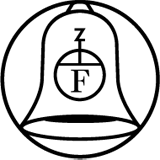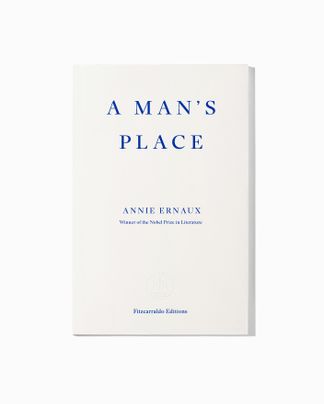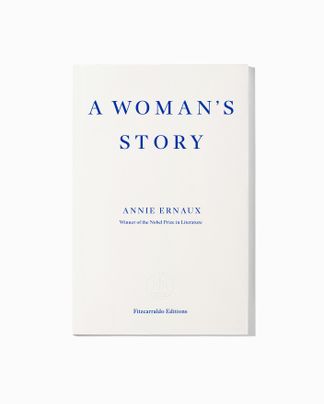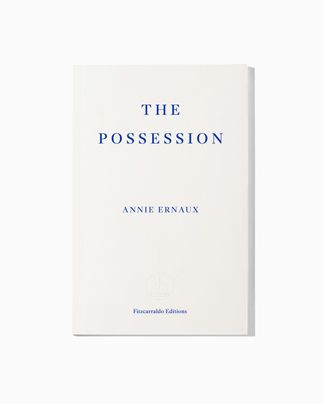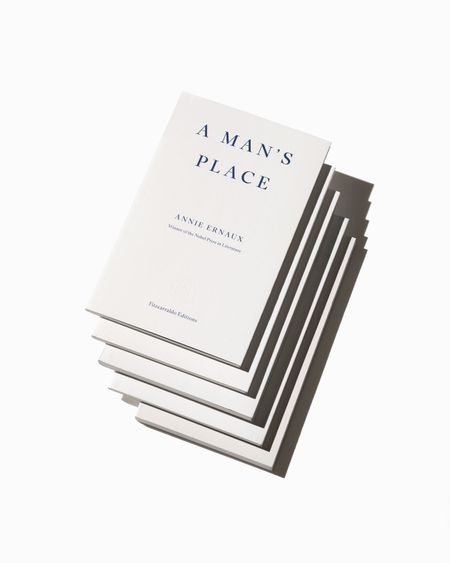One Sunday in Yvetot, August 1950. Annie is playing outside in the sun. Her mother steps out of the grocery to chat with a customer, a few metres from her. The two women’s conversation is perfectly audible; its scraps become etched forever in Annie’s memory. Before she was born, her parents had another daughter. She died at the age of six from diphtheria. Annie will never hear another word from her parents about this unknown sister, nor will she ask them a single question about her: their family unit has formed in the image of its vanished predecessor. In The Other Girl, brilliantly translated for the first time into English by Alison L. Strayer, Annie Ernaux explores the meaning of this family secret, and the insurmountable distance that separates the two sisters.
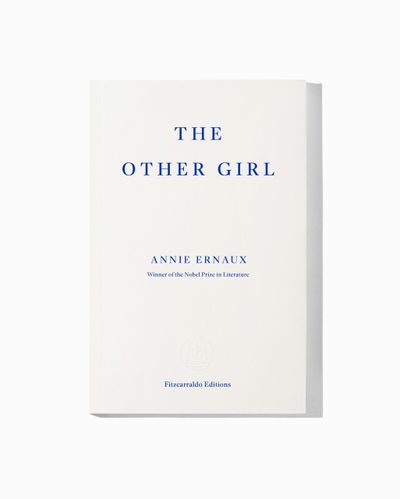
The Other Girl
Translated by Alison L. Strayer
French paperback with flaps, 64 pages
Published 25 September 2025
The Other Girl
Translated by Alison L. Strayer
0
It is a sepia photo, oval-shaped, glued inside a yellowed cardboard folder, showing a baby posed in three-quarter profile on a heap of scalloped cushions. The infant wears an embroidered nightdress with a single, wide strap to which a large bow is attached, just behind the shoulder, like a big flower or the wings of a giant butterfly. The body is long and not very fleshy. The legs are parted and stretch out towards the edge of the table. Under the brown hair, swept up in a big curl over the protuberant forehead, the eyes are wide and staring with an almost devouring intensity. The arms, open like those of a baby doll, seem to be flailing, as if the child were about to leap from the table. Below the photo, the signature of the photographer (M. Ridel, Lillebonne), whose intertwined initials also appear in the upper left-hand corner of the front cover, which is heavily soiled and coming unglued.
When I was little, I believed – I must have been told – that the baby was me. It isn’t me, it’s you.
There was another photo, taken by the same photographer, of me on the same table with my brown hair pulled up in the same sort of roll, but I appear to be plump, with deep-set eyes in a round chubby face, my hand between my thighs. I don’t remember ever being puzzled by the – obvious – differences between the two photos.
Around All Saints’ Day, I go to the cemetery in Yvetot to lay flowers on the two graves, the parents’ grave and yours. From one year to the next, I forget where they are but find my bearings with the tall and very white cross that can be seen from the central pathway and which looms over your grave, right next to theirs. I place a potted chrysanthemum of a different colour on each grave, or sometimes a pot of heather on yours, working it into the patch of gravel put there for that purpose at the foot of the tombstone.
I don’t know if people spend much time thinking in front of graves. I linger for a moment before my parents’ grave. It’s as if I’m saying, ‘Here I am,’ and showing them what has become of me in the past year, what I’ve done, written, hoped to write. Then I move on to yours, to the right. l look at the headstone and read the inscription in big, too-shiny gilded letters, crudely repainted in the nineties over the old ones, which were smaller and had become illegible. The marble mason took it upon himself to remove half of the original inscription, leaving a single entry under your first and last name, certainly because he considered it to be of utmost importance: ‘Died on Holy Thursday, 1938.’ That is what struck me too the first time I saw your grave. Like proof carved in stone of your being chosen by God, of your saintliness. In the twenty-five years I’ve been visiting the graves, I’ve never had anything to say to you.
According to the civil registry, you’re my sister. You have the same surname as me – Duchesne, my ‘maiden name’. We are listed one after the other in the parents’ family record book, almost in tatters, under the heading ‘Births and Deaths of Children of the Marriage’. You are above, with two stamps from the Mairie of Lillebonne (Seine-Inférieure), I am below with only one. The box for death will be filled out for me in another record book that attests to my reproduction of a family, under another name.
But you’re not my sister, you never were. We did not play, eat or sleep together. I never touched you, or kissed you. I don’t know the colour of your eyes. I’ve never seen you. You have no body, you have no voice. You’re just a flat image in a few black-and-white photos. I have no memory of you. You’d already been dead for two and a half years when I was born. You are the child of heaven, the invisible little girl that no one ever talked about, the absent one in every conversation. The secret.
You have always been dead. You entered my life dead the summer I turned ten. You were born and died in a story, like Bonnie, Scarlett and Rhett’s little girl in Gone with the Wind.
The scene of the story unfolds in the summer of 1950, the last great summer of playing from morning to night with cousins, local girls and a few city girls on holiday in Yvetot. We played shopkeeper with grown-ups as our customers and built houses out of bottle crates, cardboard boxes and old fabric in the many outbuildings behind my parents’ café-grocery. Standing on the swing, we took turns singing Il fait bon chez vous Maître Pierre and Ma guêpière et mes longs jupons, the way people did in talent search shows on the radio. We escaped to pick blackberries. The company of boys was forbidden by my parents on the grounds that boys preferred rough games. In the evening, we went our separate ways, covered in dirt from head to toe. I washed my arms and legs, happy to know that we’d do it all again the following day. The year after, the girls will have scattered, or fallen out, and I’ll be bored and do nothing but read.
I would like to go on describing those holidays, in order to postpone. To tell the story of the story means putting an end to the blur of the past, like developing a roll of film that has been in a cupboard for sixty years and never printed.
(…)
‘Ernaux repeatedly stuns by the depth and honesty of her psychological observations, as she does by her frugal and unsentimental language. The Other Girl, translated with touching subtlety by Alison L. Strayer, is no exception…. This book, beautiful and profound, attests to what we already knew from her other works – that Ernaux is one of the great writers of our time, and a truly worthy Nobel.’
— Magdalena Miecznicka, Financial Times
‘Across over twenty books and for the better part of the last five decades, Ernaux has gathered, broken and reassembled the infinite, singular matter of her history…. Perhaps no other literary figures, save Proust or Knausgaard, have come as near to achieving so Promethean a project.’
— Jamie Hood, The Baffler
‘Annie Ernaux manifestly believes in the liberating force of writing. Her work is uncompromising and written in plain language, scraped clean. And when she with great courage and clinical acuity reveals the agony of the experience of class, describing shame, humiliation, jealousy or inability to see who you are, she has achieved something admirable and enduring.’
— Anders Olsson, chair of the Nobel Committee
‘Annie Ernaux writes memoir with such generosity and vulnerable power that I find it difficult to separate my own memories from hers long after I’ve finished reading.’
— Catherine Lacey, author of The Möbius Book
‘Reading her is like getting to know a friend, the way they tell you about themselves over long conversations that sometimes take years, revealing things slowly, looping back to some parts of their life over and over, hardly mentioning others.’
— Joanna Biggs, London Review of Books
‘Annie Ernaux is one of my favourite contemporary writers, original and true. Always after reading one of her books, I walk around in her world for months.’
— Sheila Heti, author of Alphabetical Diaries
‘Ernaux has inherited de Beauvoir’s role of chronicler to a generation.’
— Margaret Drabble, New Statesman
Praise for A Woman’s Story
‘Infinitely original. A Woman’s Story is every woman’s story. [Its] power rests not in the drama of its main event but in moments that might escape unnoticed, if not for a writer desperate to recapture every last image that her memory reluctantly yields of a lost loved one.’
— New York Times
‘Ernaux’s genius, here as elsewhere, is in using her own experiences to bring into consciousness our painful unknown knowns, through a deeply relatable, hyper-personal objectivity.’
— Lucy Sweeney Byrne, Irish Times
‘What emerges is something that verges on the mystical: Ernaux writes as though she is not writing but unearthing something that already exists.’
— Lucy Thynne, The London Magazine
Praise for Shame
‘[Shame and The Young Man] deserve to be read widely. Her work is self-revealing, a series of pitiless auto-autopsies…. Their disparate achievements work together to illuminate something perennially fascinating about Ernaux: her relationship to revelation and visibility. These are deeply intimate books, but in another way, Ernaux brings a disquieting impersonality to her project.’
— Megan Nolan, The Times
‘[E]xceptionally deft and precise, the very epitome of all that language can do … a surprisingly tender evocation of a bright, passionate and self-aware young girl growing up in her parents’ “café-haberdashery-grocery” in a small town in Normandy.’
— Julie Myerson, Observer
‘It’s hard to fault a book that so elegantly and engagingly shows how … past horrors of varying scale can consciously and subconsciously affect someone…. [A] prescient and eminently readable book, as well as a great introduction to a giant of French literature.’
— India Lewis, The Arts Desk
Praise for A Man’s Place
‘A lesser writer would turn these experiences into misery memoirs, but Ernaux does not ask for our pity – or our admiration. It’s clear from the start that she doesn’t much care whether we like her or not, because she has no interest in herself as an individual entity. She is an emblematic daughter of emblematic French parents, part of an inevitable historical process, which includes breaking away. Her interest is in examining the breakage … Ernaux is the betrayer and her father the betrayed: this is the narrative undertow that makes A Man’s Place so lacerating.’
— Frances Wilson, Telegraph
‘Not simply a short biography of man manacled to class assumptions, this is also, ironically, an exercise in the art of unsentimental writing…. The biography is also self-reflexive in its inquiry and suggests the question: what does it mean to contain a life within a number of pages?’
— Mia Colleran, Irish Times
‘Ernaux understands that writing about her parents is a form of betrayal…. [I]t is thrilling to read Ernaux working out, word by word, what she deems appropriate to include in each text. In being willing to show her discomfort, her disdain and her honest, careful consideration of the dilemmas of writing about real, lived lives, Ernaux has struck upon a bold new way to write memoir.’
— Ellen Peirson-Hagger, New Statesman
Born in 1940, Annie Ernaux grew up in Normandy, studied at Rouen University, and later taught at secondary school. From 1977 to 2000, she was a professor at the Centre National d’Enseignement par Correspondance. In 2017, Annie Ernaux was awarded the Marguerite Yourcenar Prize for her life’s work. In 2022, she was awarded the Nobel Prize in Literature.
Alison L. Strayer is a Canadian writer and translator. Her work has been shortlisted for the Governor General’s Award for Literature and Translation and the Grand Prix du Livre de Montréal, and longlisted for the Prix Albertine. Her translation of The Years by Annie Ernaux was awarded the 2018 French-American Foundation Translation Prize, shortlisted for the 2019 International Booker Prize and awarded the 2019 Warwick Prize for Women in Translation, honouring both author and translator.
